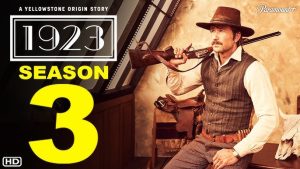Taylor Sheridan’s Worst ‘Yellowstone’ Mistake Had Nothing to Do With Kevin Costner, But It Ruined the Franchise’s Best Prequel
When Yellowstone wrapped its epic John Dutton saga, many fans were eager for more—but Taylor Sheridan’s real misstep came not in Montana, but in his follow-up work on 1923. This prequel, often praised as the franchise’s strongest, was undermined by Sheridan’s creative overextension and intrusive storytelling style.
🧠 1923 Was the Franchise’s High Point
1923 arrived as a thoughtful, standalone epic: a rich, character‑driven depiction of early Dutton struggles, featuring unlikely pairings like Harrison Ford and Helen Mirren. It offered emotional resonance and narrative depth often missing from later seasons of Yellowstone. vanityfair.com+15tvguide.com+15reddit.com+15 reddit.com+1vanityfair.com+1nypost.com
reddit.com+1vanityfair.com+1nypost.com
Fans at the time praised its cinematic scope and storytelling clarity—marking it as the franchise’s high point. Some noted that the writing and plotting felt stronger and more focused than Yellowstone itself.
⚠️ Sheridan’s Overreach: Spinning, Self-Inserts, and Style Over Story
The problems began when Sheridan tried to copy Yellowstone’s formula across multiple shows. Collider noted that Sheridan was “over‑extending” himself, juggling too many projects—Yellowstone, 1923, Landman, Million‑Dollar projects—resulting in diluted quality. reddit.com+1reddit.com+1
Particularly in 1923’s second season, fans started noticing repetitive themes, gratuitous sex scenes, and increasingly self-indulgent storytelling. On Reddit, viewers criticized what they saw as Sheridan’s “gratuitous” content that didn’t advance the plot.
👎 Self‑Insert Syndrome: Travis the Travis-ette
Worst of all was Sheridan’s habit of inserting himself on screen. Known for cameos across his works (Yellowstone, Lioness, Landman), he often plays a cowboy named Travis. Audiences reacted harshly—many called his performances “amateurish,” among the worst parts of Yellowstone. ew.com+11reddit.com+11reddit.com+11
This self-indulgence was later carried into the 1923 storyline, breaking the immersive tone and drawing criticism:
“He focuses on things that don’t advance the plot… then in 1923 he has all these sex scenes… .” businessinsider.com+6reddit.com+6entert.online+6
Such distractions not only pulled focus from the central narrative but dulled the thematic strength that 1923 initially held.
🔄 Fan Lament: Quality Dropped Fast
Fans voiced their disappointment plainly:
“1923 is following that pattern… Sheridan’s talent for good storytelling seems to have disappeared.” en.wikipedia.orgreddit.com
Many demoted Sheridan’s late prequel efforts as the moment the franchise lost its way—“the show became a political drama with random ranching,” one wrote. reddit.com+15reddit.com+15reddit.com+15
🔍 Contrast with Costner’s Departure
Though Kevin Costner’s on‑screen exit sparked backlash when John Dutton vanished too soon in Yellowstone, that wasn’t Sheridan’s misstep. The real issue lay in how Sheridan handled 1923, once hailed as the franchise’s crown jewel.
Costner’s departure triggered fan outrage, but Sheridan’s creative dilution caused the dulling of an especially strong project—making that prequel feel like “a mess” according to many viewers.
The post‑Costner critique was loud, but the prequel breakdown revealed deeper structural issues in Sheridan’s increasing overreach.
🔚 Final Thoughts: When Focus Matters
It’s ironic: Sheridan created the strongest Yellowstone entry in 1923, only to undermine it with ego and creative exhaustion.
Rather than technical limits or actor conflict, Sheridan’s biggest misstep was himself—stretching his influence too thin, over‑writing the franchise, and turning a promising prequel into yet another confused entry.
If Yellowstone stands for legacy, then 1923 became Sheridan’s cautionary tale: legacy isn’t built by multiple spin‑offs or forced self-cameos—it’s earned by restraint, focus, and allowing the narrative to breathe.